Planning a trip, whether it’s a short getaway or a long adventure, can be a daunting task. The key is to approach it systematically and efficiently. In this comprehensive guide, we’ll walk you through how to plan a trip in 8 simple steps, ensuring a stress-free experience from start to finish. From setting a realistic budget to exploring unique destinations and packing your bags, we’ve got you covered.
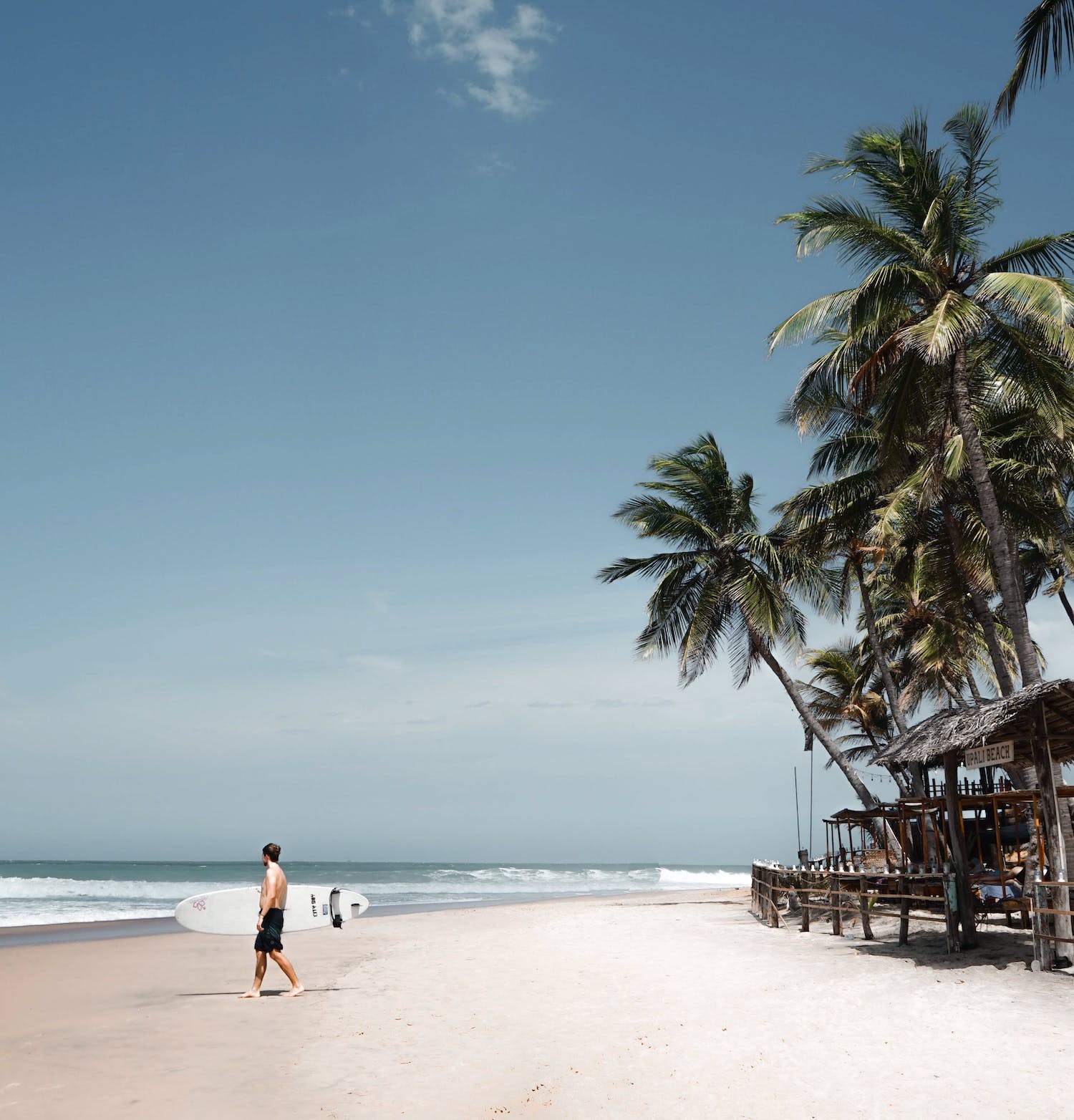
This article contains affiliate links from the Amazon Associate and Travelpayouts programs. Wild Travel Tales will earn from qualifying purchases, at no extra cost to you.
Step 1: Understand Your Travel Needs
When embarking on a journey, the first crucial step is understanding your travel needs. This involves not only envisioning the experiences you seek but also making practical decisions that shape the entire adventure. These fundamental considerations will lay the groundwork for a well-thought-out and enjoyable adventure. Let’s delve into three key aspects when thinking about how to plan a trip:
Set a Realistic Budget
Before you dive into the exciting details of your trip, it’s essential to assess your finances and set a realistic budget. Your budget will be the guiding force behind various decisions, from choosing destinations to the length of your journey. Consider factors such as accommodation, transportation, activities, and daily expenses. This initial financial groundwork ensures you embark on a trip that aligns with your means.
Your budget will be the compass guiding you through the vast landscape of travel possibilities. Here’s why setting a realistic budget is paramount:
- Prevent Overspending: A budget serves as your financial compass, delineating clear boundaries that prevent overspending.
- Make the Most of Your Money: By establishing limits for various aspects of your trip, such as accommodation, transportation, and daily expenses, you gain the freedom to explore without constant worry about exceeding your means.
- Aligning Expectations with Reality: Setting a budget will help you align your travel aspirations with your financial capacity. It prevents the disappointment that might arise from dreaming of luxury accommodations when a more budget-friendly option is practical.
- Stress-Free Journey: A well-thought-out budget minimises financial stress, allowing you to immerse yourself in the experiences your trip offers without constantly worrying about the cost.
Now that we understand the significance of setting a budget, let’s explore how to create one tailored to your specific needs:
- Assess Your Finances: Start by examining your current financial situation. Evaluate your savings, monthly income, and any outstanding commitments. This provides a realistic snapshot of the funds available for your journey.
- Identify Priorities: What aspects of your trip are non-negotiable, and where can you be more flexible? Identify priorities such as accommodation comfort, transportation preferences, and must-do activities. For example, you may be willing to stay in budget hostels so that you can travel for longer. This helps in allocating funds more effectively.
- Consider All Expenses: A comprehensive budget covers more than just flights and accommodation. Factor in daily expenses like meals, transportation within the destination, entrance fees to attractions, and any planned activities. Be thorough to avoid unexpected financial surprises.
- Research Costs: Investigate the typical costs associated with your chosen destination. Prices can vary widely, and having a realistic estimate ensures you’re well-prepared for the financial aspects of your journey.
- Buffer for Contingencies: While planning, set aside a buffer for unexpected expenses or emergencies. This precautionary measure provides financial resilience and ensures you’re not caught off guard.
By setting a budget thoughtfully and adhering to it, you empower yourself to make the most of your travels while maintaining financial peace of mind. The next steps in our guide will build upon this financial foundation as we move towards crafting a seamless travel plan.
Defining Your Travel Style and Companions
Every traveler is unique, and understanding your travel style is key to crafting an enjoyable itinerary. Are you a solo adventurer seeking solitude and self-discovery, or do you prefer the camaraderie of friends or family? Whether it’s a romantic escape, a family vacation, or a solo exploration, defining your travel companions and preferred style will significantly influence your decisions throughout the planning process. Understanding this style allows you to tailor your itinerary to align seamlessly with your preferences and expectations.
Pros of Solo Travel
- Ultimate Freedom: Solo travel provides unparalleled freedom and flexibility. You can go where you want, when you want, without the need for group consensus.
- Self-Discovery: It offers a journey of self-discovery, allowing you to learn more about yourself, boost self-confidence, and develop independence.
- Spontaneity: Solo travellers can embrace spontaneity, changing plans on a whim without the need for group discussions.
Cons of Solo Travel
- Loneliness: The lack of companionship may lead to occasional loneliness, especially during meals or when exploring new destinations.
- Security Concerns: Solo travellers may attract more attention, and safety can be a concern in certain locations.
- Higher Costs: Accommodation and transportation costs are often higher for solo travellers, as expenses aren’t shared.
Pros of Traveling with Friends and Family
- Shared Experiences: Traveling with companions allows for shared experiences and creates lasting memories together.
- Cost Sharing: Group travel often leads to cost savings, with the ability to split expenses like accommodation, transportation, and meals.
- Enhanced Safety: There’s a sense of security when traveling in a group, as you can look out for each other.
Cons of Traveling with Friends and Family
- Compromises: Group travel involves compromises, as everyone might have different interests and preferences.
- Less Flexibility: Coordinating schedules and preferences can limit the spontaneity of the trip.
- Potential Conflict: Spending extended periods together may lead to occasional conflicts or disagreements.
Deciding the Duration of Your Trip
The length of your journey is a critical consideration that directly impacts your overall travel experience. Different destinations and types of trips may require varying durations. Consider the number of days or weeks you plan to spend at your chosen destination. This decision helps in estimating your budget accurately and allows for better planning of activities and accommodations.

Step 2: Choosing the Perfect Destination
Selecting the perfect destination is a pivotal decision that shapes the entire tapestry of your travel experience. This section is not merely about picking a place on the map; it’s about curating an adventure that resonates with your interests, preferences, and aspirations. Let’s delve into the detailed significance of this decision and explore effective ways to find your ideal destination.
Significance of Selecting a Destination
Choosing where to go is more than a logistical step. It’s a transformative decision that influences every aspect of your journey. Here’s why the destination holds such profound significance:
- Personalisation of Experience: Your chosen destination is the canvas on which you’ll paint your travel memories. You need to think about the unique landscapes, cultures, and activities that align with your interests.
- Fulfilment of Aspirations: Different destinations cater to various travel aspirations. Whether you seek relaxation on pristine beaches, cultural immersion in bustling cities, or adventure in the great outdoors, the right destination fulfils your travel dreams.
- Influence on Budget: The destination choice significantly impacts your budget. Some locations may be more budget-friendly, while others might require a more flexible financial plan. Being mindful of this ensures a harmonious balance between your dream destination and financial constraints.
- Duration and Type of Trip: The chosen destination dictates the ideal duration and type of trip. A city break might be suitable for a shorter duration, while an exploration of a vast natural landscape might require a more extended stay. Aligning your destination with your trip goals is essential.
Utilising Resources for Destination Inspiration
Now that we understand the significance, let’s explore how to ignite the spark of inspiration when choosing your ideal destination:
- Diverse Destination Guides: Explore a plethora of destination guides available online. These guides provide in-depth insights into various locations, helping you discover hidden gems, unique attractions, and local experiences.
- Budget-Friendly Options: For those conscious of their budget, explore resources highlighting destinations that offer incredible experiences without breaking the bank. Look for lists of budget-friendly destinations tailored to your preferences.
- Tropical Islands and Adventure Spots: If you’re drawn to tropical paradises or crave adrenaline-pumping adventures, seek inspiration from curated lists showcasing the best tropical islands or adventure-centric destinations worldwide.
Considering Essential Factors: Weather, Peak Seasons, and Local Events
Once inspired, the practical considerations come into play. Here’s a checklist to ensure your destination aligns seamlessly with your preferences:
- Weather: Consider the climate of your chosen destination during your intended travel dates. Ensure it aligns with your comfort level and the activities you wish to pursue.
- Peak Seasons: Evaluate peak tourism seasons. Traveling during off-peak times might offer cost savings and a more intimate experience with the destination.
- Local Events: Check for local events or festivals happening during your visit. Immersing yourself in the local culture can enhance your overall experience.
By meticulously defining your destination choice and utilising diverse resources for inspiration, you set the stage for a journey tailored to your preferences.

Step 3: Book Your Flights
Booking your flights is a pivotal moment in your trip planning journey, and doing so with a strategic approach can result in significant savings and a smoother travel experience. In this section, we’ll delve into comprehensive tips sourced from experts to help you navigate the skies with savvy.
Getting the Best Flights
There are a number of tips to ensure you can get the best flights for your destination:
- Start Early for Better Choices: Initiate your flight search well in advance to access a broader range of options. Early birds often secure better deals and have more flexibility in choosing flight times.
- Utilise Flight Comparison Tools: Use comparison tools like Kiwi for flexible airline and date searches. This feature allows you to identify the most cost-effective flights and days for your journey, potentially saving you a substantial amount.
- Sign Up for Price Alerts: Be proactive in monitoring price fluctuations. Sign up for price alerts on various platforms or use dedicated apps that notify you when there are changes in flight prices for your chosen route.
- Maximise Rewards: If you have travel rewards credit cards, this is the perfect time to cash in on your accumulated points. Use your rewards to book flights, potentially enjoying significant discounts or even free tickets.
Getting Flights on a Budget
If you’re looking to save money by finding cheaper flights, there are ways to adapt your trip schedule:
- Consider Breaking Up Flights: Investigate the possibility of breaking up your journey into multiple legs. Sometimes, this strategy can lead to more affordable options, especially for long-haul flights.
- Be Open to Nearby Airports: Expand your search to include nearby airports. Sometimes, flying into or out of a neighbouring airport can result in lower fares, offering you more choices in your travel planning.
- Be Flexible with Routes: Explore different route options to your destination. Sometimes, indirect flights or layovers can be more cost-effective, and you might even discover interesting stopover destinations.
- Book in Incognito Mode: When actively searching for flights online, use your browser’s incognito or private mode. Some websites may adjust prices based on your search history, and this ensures you see the most accurate and unbiased results.
By incorporating these detailed tips into your flight booking strategy, you maximise your chances of securing the best deals for your journey. The next steps in our guide will seamlessly build upon this foundation as we progress toward crafting a seamless travel plan.

Step 4: Book Your Accommodation
As you embark on the journey of booking your accommodation, it’s not merely about securing a place to rest; it’s about curating a space that complements your travel experience. This section explores comprehensive considerations for booking accommodation, taking into account the duration of your journey.
Choosing the Right Type of Accomodation
Booking your accommodation starts with the decision to book a hostel, hotel, apartment or otherwise. This will largely depend on the duration of your travels, and preferences.
- Type of Accommodation: For short-term travel, opt for hotels or well-located hostels that allow you to maximise your time exploring rather than commuting. For longer-term travel, Consider a mix of boutique hotels, vacation rentals, serviced apartments, or even house-sitting arrangements.
- Alternative Accommodation Options: Explore alternative accommodation options based on your preferences, such as Airbnb, guesthouses, or even eco-friendly resorts. These options often provide a more personalised experience.
Selecting the Best Accomodation
Once you know what type of accommodation you want to stay in, you need to choose where to actually stay. Here are the top considerations:
- Location Matters: Regardless of travel duration, prioritise a location that aligns with your planned activities. If you’re interested in historical sites, a central location might be preferable. For a beach retreat, proximity to the coast is essential.
- Transportation Access: Consider the accessibility of public transportation or rental services from your accommodation. This becomes especially vital for longer trips when you may need to explore beyond walking distance.
- Reviews and Ratings: Dive into reviews and ratings on various platforms to gain insights into the experiences of previous guests. Look for properties with positive feedback on cleanliness, safety, and helpful staff.
- Cancellation Policies: Check the accommodation’s cancellation policies, especially if your travel plans are subject to change. Flexible cancellation policies provide peace of mind in uncertain situations.
- Booking Platforms: Utilise reputable booking platforms like Hostelworld, Booking.com, or Airbnb, to explore a wide range of accommodation options. Compare prices, read reviews, and take advantage of any promotions or discounts.
By tailoring your accommodation choice to the duration of your travel, you not only enhance your overall experience but also ensure a seamless and comfortable stay. The next steps in our guide will build upon this foundation as we continue crafting a well-rounded and stress-free travel plan.
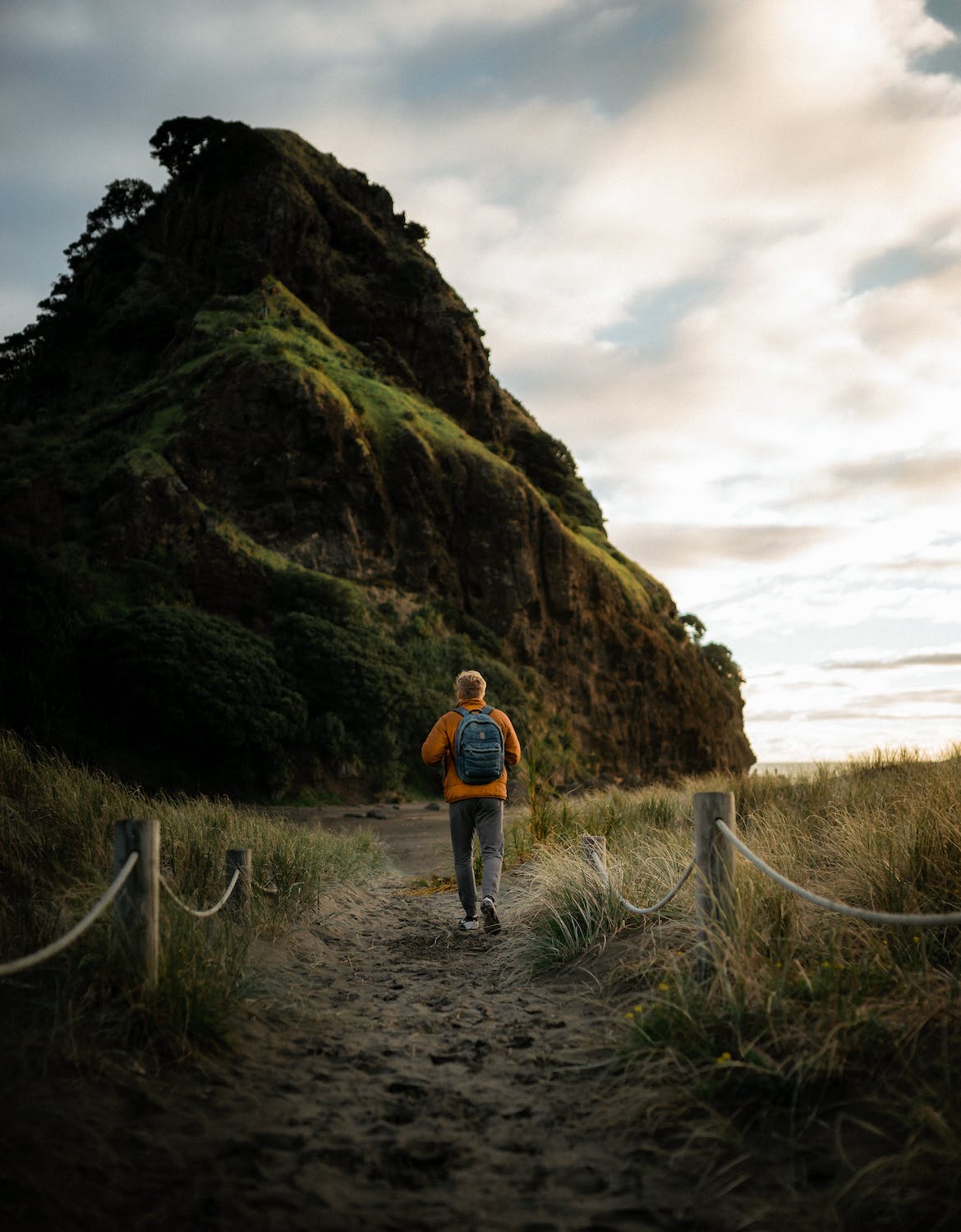
Step 5: Plan What to Pack
As you approach the crucial step of planning what to pack, envision your luggage not just as a carrier of belongings but as a carefully curated ensemble that enhances your travel experience. This section briefly outlines how to pack efficiently. To ensure you have everything you need for a comfortable trip, check out our detailed packing list for backpackers.
- Pack with Purpose: Before you start, envision your daily activities and the climate of your destination. This foresight helps you pack with purpose, ensuring each item serves a specific function.
- Create a Packing List: Draft a comprehensive packing list covering clothing, toiletries, accessories, and any specialised items. Having a checklist minimises the risk of forgetting essentials.
- Phone and Data: Your phone will be the core of your travel logistics. You will use it to plan as you go, book tickets, and keep you entertained. Ensure you pack a quality phone and secure a reliable international data plan. We explore this in more depth in our guide to the best international travel SIM cards.
- Consider the Destination’s Culture: Research cultural norms and dress codes at your destination. This ensures you pack clothing that respects local customs and traditions.
- Check Weather Forecasts: Stay updated on the weather forecasts for your travel dates. Pack accordingly, including layers for variable climates or specific gear for extreme conditions.
- Essential Travel Documents: Organise and pack essential travel documents such as passports, visas, tickets, and accommodation confirmations. Consider keeping digital copies as backup.
- Electronics and Chargers: Pack your electronics, including chargers and adapters. Research the voltage at your destination and ensure your devices are compatible or bring appropriate converters.
- Specialised Gear: If your trip involves specific activities like hiking, scuba diving, or skiing, pack the necessary specialised gear. Confirm if such items are available at your destination or if bringing your own is more practical.
- Entertainment and Comfort Items: Bring items for entertainment and comfort, such as a book, travel pillow, or a portable charger. These small additions can make a significant difference during transit.
By mastering the art of efficient packing and considering destination-specific factors, you not only ensure preparedness but also enhance your overall travel experience. The next steps in our guide will seamlessly build upon this foundation as we continue crafting a well-rounded and stress-free travel plan.
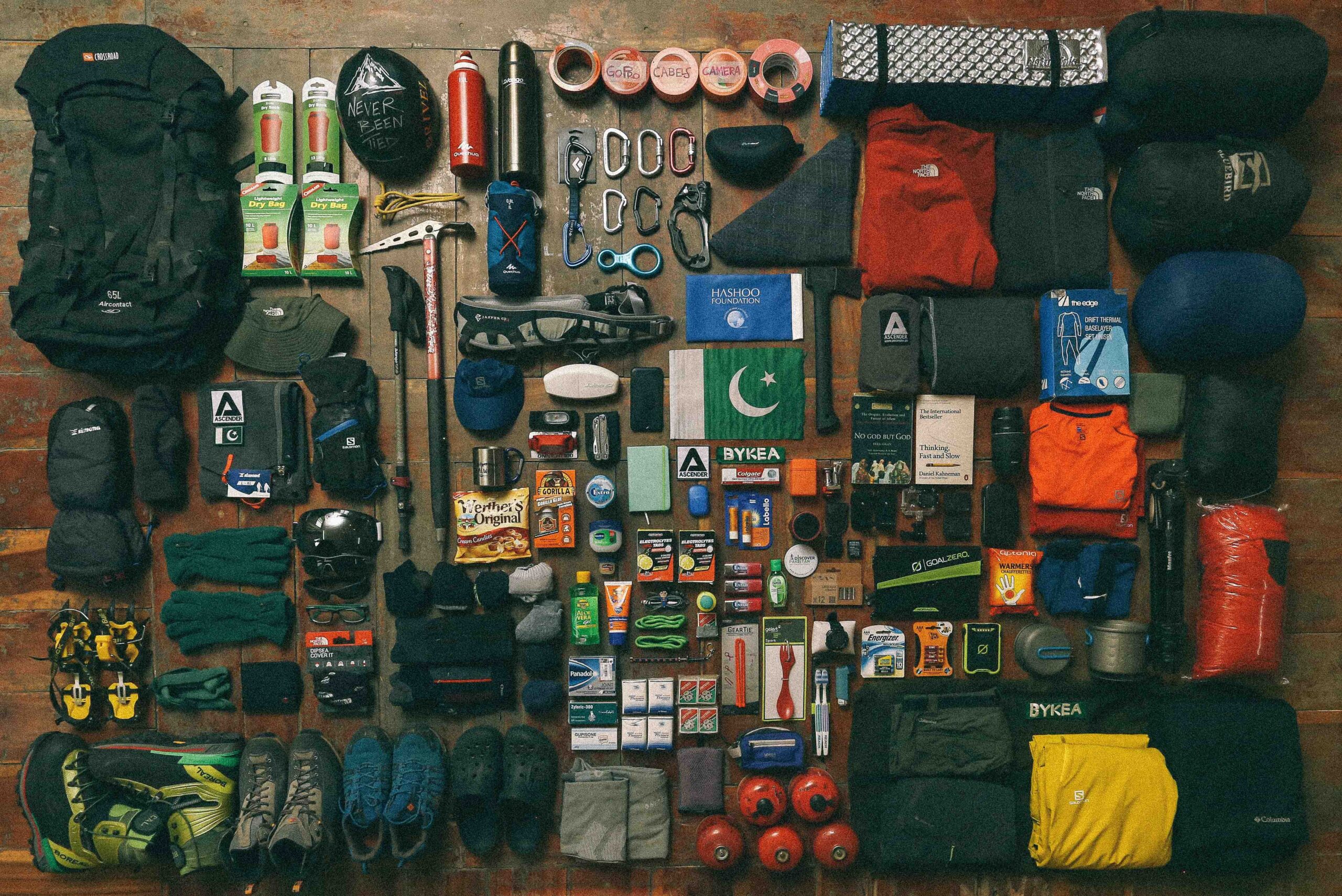
Step 6: Researching and Planning Activities
As you delve into the exhilarating phase of researching and planning activities, envision yourself as the architect of your adventure. This section guides you through the intricate process of creating an itinerary that seamlessly blends exploration, relaxation, and discovery.
Inspiration for Travel Activities
The activities you choose for your destination will depend on your interests and availability. There are many sources you can turn to for inspiration.
- Dive into Destination Exploration: Start your activity planning by immersing yourself in the rich offerings of your chosen destination. Explore travel blogs, destination-specific websites, and online forums to uncover hidden gems and local favourites.
- Utilize Visual Platforms: Leverage visual platforms like Pinterest and Instagram for inspiration. Browse through travel photos and create mood boards to visualize your ideal experiences and activities.
- Tap into TripAdvisor for Recommendations: TripAdvisor is a treasure trove of recommendations and reviews. Explore the top-rated activities, attractions, and restaurants to curate a list based on the experiences of fellow travellers.
Considerations and Types of Activities
There are a number of different types of activities to think about when planning your trip. This includes cultural and historical sites, local food hotspots, natural sites, adventure activities, and more.
- Cultural and Historical Exploration: Balance your itinerary with cultural and historical experiences. Visit museums, heritage sites, and landmarks to gain a deeper understanding of the destination’s rich tapestry.
- Food and Culinary Adventures: Culinary exploration is an integral part of travel. Research local dishes, street food markets, and acclaimed restaurants to embark on a gastronomic journey.
- Natural Wonders: Some destinations are best known for the pure glory of their natural landscapes. Explore the nearby mountains, jungles, forests, lakes, beaches, or whatever else piques your interest.
- Adventure Seekers’ Checklist: If you’re an adventure enthusiast, plan activities that align with your thrill-seeking spirit. Research hiking trails, water sports, or adrenaline-pumping excursions available at your destination.
- Interaction with Local Communities: Plan activities that facilitate interaction with local communities. This could involve attending community events, volunteering, or engaging in cultural exchanges.
- Explore Local Events and Festivals: Check for local events and festivals happening during your visit. Participating in cultural celebrations adds a vibrant layer to your travel experience.
Logistical Considerations
Planning the activities for your travels will be tricky and might feel overwhelming. Here are some practical tips to ensure you make the most of your travels.
- Plan Relaxation and Downtime: While planning a jam-packed itinerary is exciting, remember to incorporate downtime for relaxation. Whether it’s a leisurely day at the beach or a tranquil afternoon in a local park, balance is key.
- Flexibility for Spontaneity: Allow room for spontaneity in your itinerary. Leave gaps that can be filled with serendipitous discoveries, recommendations from locals, or impromptu adventures.
- Cultural Sensitivity in Activity Planning: Be culturally sensitive when planning activities. Research local customs and etiquettes to ensure your chosen experiences align with the cultural norms of the destination.
- Create a Flexible Daily Schedule: Develop a daily schedule that allows for flexibility. Include a mix of planned activities, leisure time, and opportunities to explore unplanned discoveries.
- Document Your Itinerary: Document your itinerary in a convenient format. Whether it’s a physical notebook or a digital app, having your plans accessible ensures a smooth and organised travel experience.
By meticulously researching and planning your activities, you lay the foundation for a memorable and enriching journey. The next steps in our guide will seamlessly build upon this foundation as we continue crafting a well-rounded and stress-free travel plan.
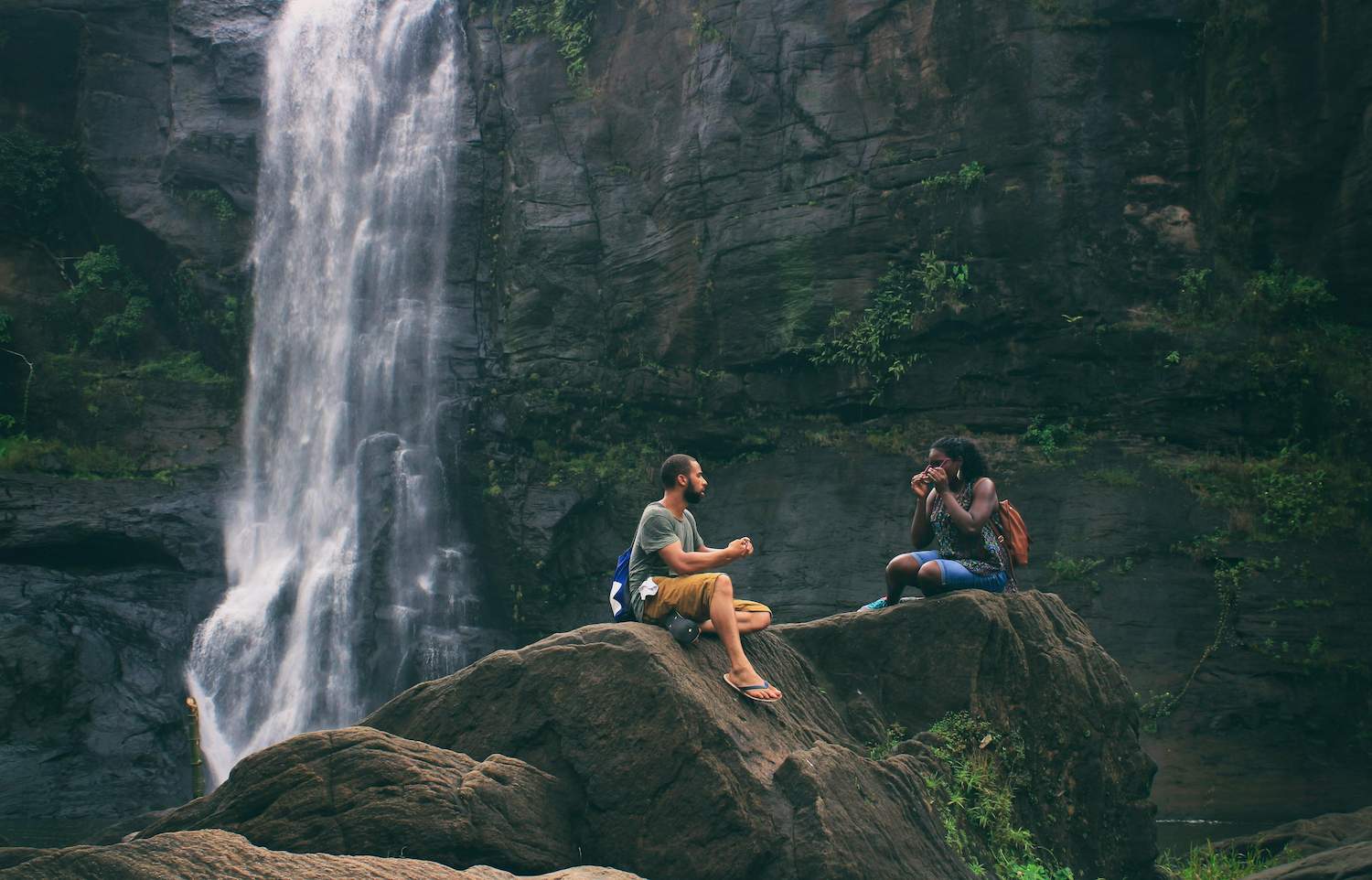
Step 7: Plan for Safety and Minimise Risks
Embarking on a journey is an exhilarating adventure, but ensuring your safety and minimising risks is paramount. This section guides you through thoughtful measures to safeguard your travel experience.
Safety Preparation Before You Depart
There are several things to do prior to leaving on your holiday, to ensure your safety and security:
- Research Local Safety Guidelines: Before you depart, research and familiarise yourself with the safety guidelines and regulations of your destination. Be aware of any travel advisories or warnings issued by official authorities.
- Purchase Comprehensive Travel Insurance: Invest in comprehensive travel insurance to cover unexpected events such as medical emergencies, trip cancellations, or lost belongings. Ensure the policy aligns with your specific travel needs.
- Stay Connected with Embassy Information: Stay connected with your embassy or consulate at the destination, to be aware of any safety warnings. Register with them if necessary and keep their contact information accessible in case of emergencies.
- Share Your Itinerary with Trusted Contacts: Share your travel itinerary with trusted friends or family members. Keep them informed about your plans and check in regularly to provide updates on your well-being.
Minimise Risks While You Travel
If you want to minimise safety risks while you’re travelling, make sure to:
- Stay Informed about Local Scams: Educate yourself about common scams in the region and how to avoid them. Being aware of potential scams enhances your ability to navigate unfamiliar environments safely.
- Secure Your Belongings: Be aware of common travel scams. Keep your belongings secure by using anti-theft measures such as money belts, secure locks, and caution in crowded areas. Be vigilant in public spaces and transportation hubs.
- Stay Aware of Your Surroundings: Maintain situational awareness throughout your journey. Be conscious of your surroundings, and trust your instincts if a situation feels uncomfortable or unsafe.
- Follow Health and Safety Protocols: Adhere to health and safety protocols, especially in light of global events. Stay informed about vaccination requirements, health advisories, and any specific measures in place at your destination.
- Be Prepared for Emergencies: Be prepared for emergencies. Carry a basic first aid kit, know the emergency exit locations in your accommodations, and have a plan in case of unexpected situations.
- Be Mindful of Cultural Sensitivities: Understand and respect the cultural sensitivities of the destination. Familiarise yourself with local customs, traditions, and appropriate behaviour to avoid unintentional conflicts.
By proactively planning for safety and minimising risks, you contribute to a secure and enjoyable travel experience. The next steps in our guide will seamlessly build upon this foundation as we continue crafting a well-rounded and stress-free travel plan.
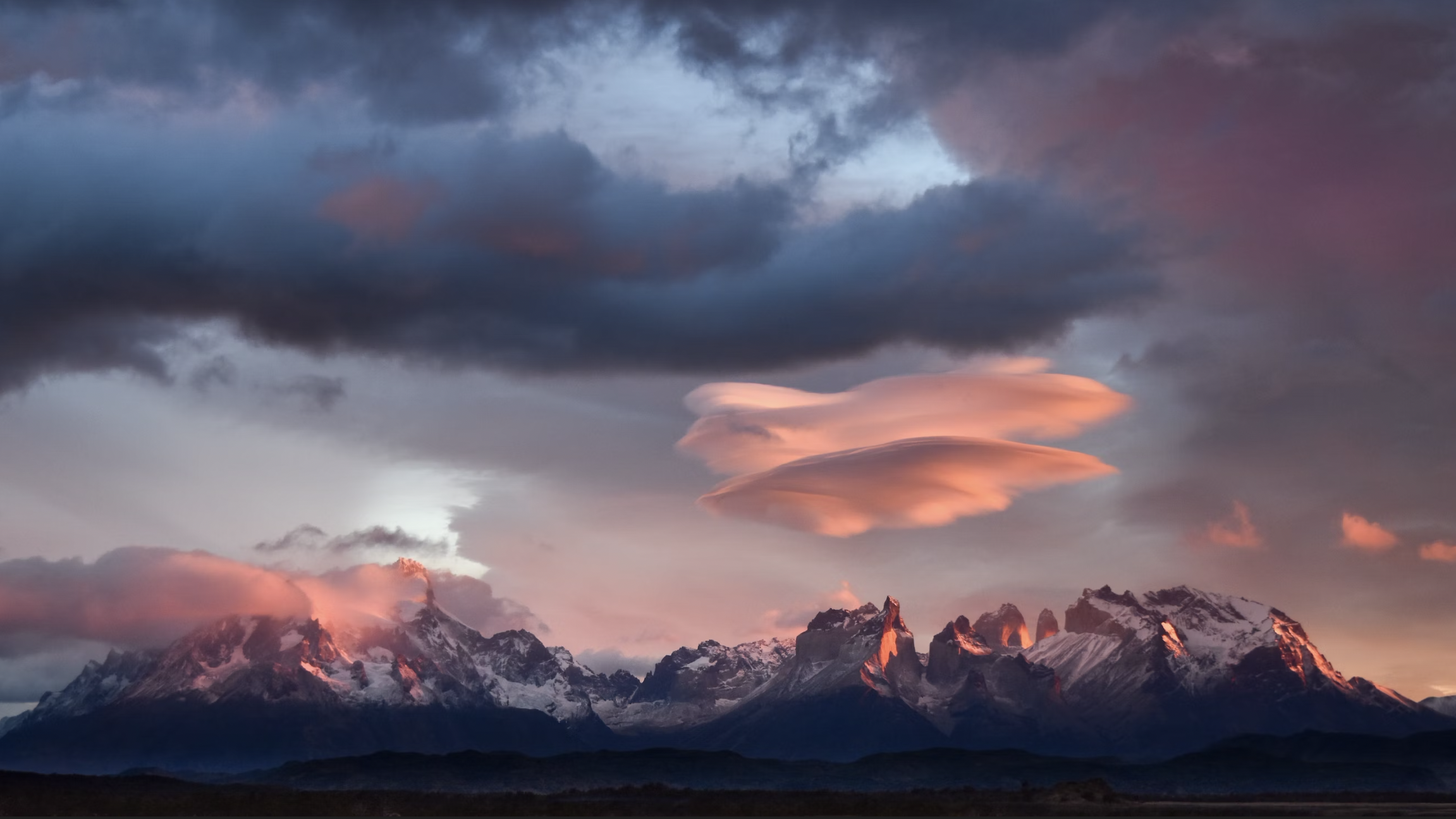
Step 8: Tips for Saving Money and Maximising Rewards
Embarking on a journey doesn’t have to break the bank. Instead, it offers an opportunity to explore smart financial strategies. If you plan to travel on a budget and make smart decisions while on the road, you can make your money go a long way. Here’s a comprehensive guide with tips to save money and maximise rewards throughout your travel planning:
- Explore Low-Cost Accommodation Options: Opt for budget-friendly accommodation options such as hostels, guesthouses, or vacation rentals. Utilise platforms like Airbnb, Booking.com, or Hostelworld for affordable choices.
- Leverage Travel Rewards Credit Cards: Maximise your savings by acquiring a travel rewards credit card. Look for cards offering sign-up bonuses, points, or miles that can be redeemed for free flights, hotel stays, or other travel-related expenses.
- No-Fee ATM Cards for Global Access: Minimise fees while accessing money abroad by using a no-fee ATM card. Consider options like Charles Schwab or explore banks within the Global ATM Alliance for fee-free withdrawals.
- Seek Out Last-Minute Deals: Before finalising bookings, explore last-minute deals for potential savings. Platforms like Going, The Flight Deal, and Holiday Pirates can uncover hidden opportunities for budget-friendly travel.
- Utilise Online Discounts and Deals: Take advantage of online discounts and deals for accommodations, activities, and tours. Platforms like Groupon, Viator, and local tourism websites often offer significant savings.
- Earn Extra Income Through Side Gigs: Explore online opportunities for earning extra income through side gigs. Freelancing, online surveys, or part-time remote work can contribute to your travel fund.
- Maximise Sign-Up Bonuses: Take advantage of sign-up bonuses offered by various travel-related programs. Whether it’s a hotel loyalty program, airline miles program, or credit card rewards, these bonuses can enhance your travel savings.
- Track and Minimise Unnecessary Expenses: Maintain a vigilant eye on your daily expenses. Tracking and minimising unnecessary costs can contribute significantly to your overall savings.
By implementing these tips, you’ll not only save money but also open doors to additional rewards and benefits, enhancing the overall value of your travel experience. The next steps in our guide will seamlessly build upon this financial wisdom as we continue crafting a well-rounded and stress-free travel plan.
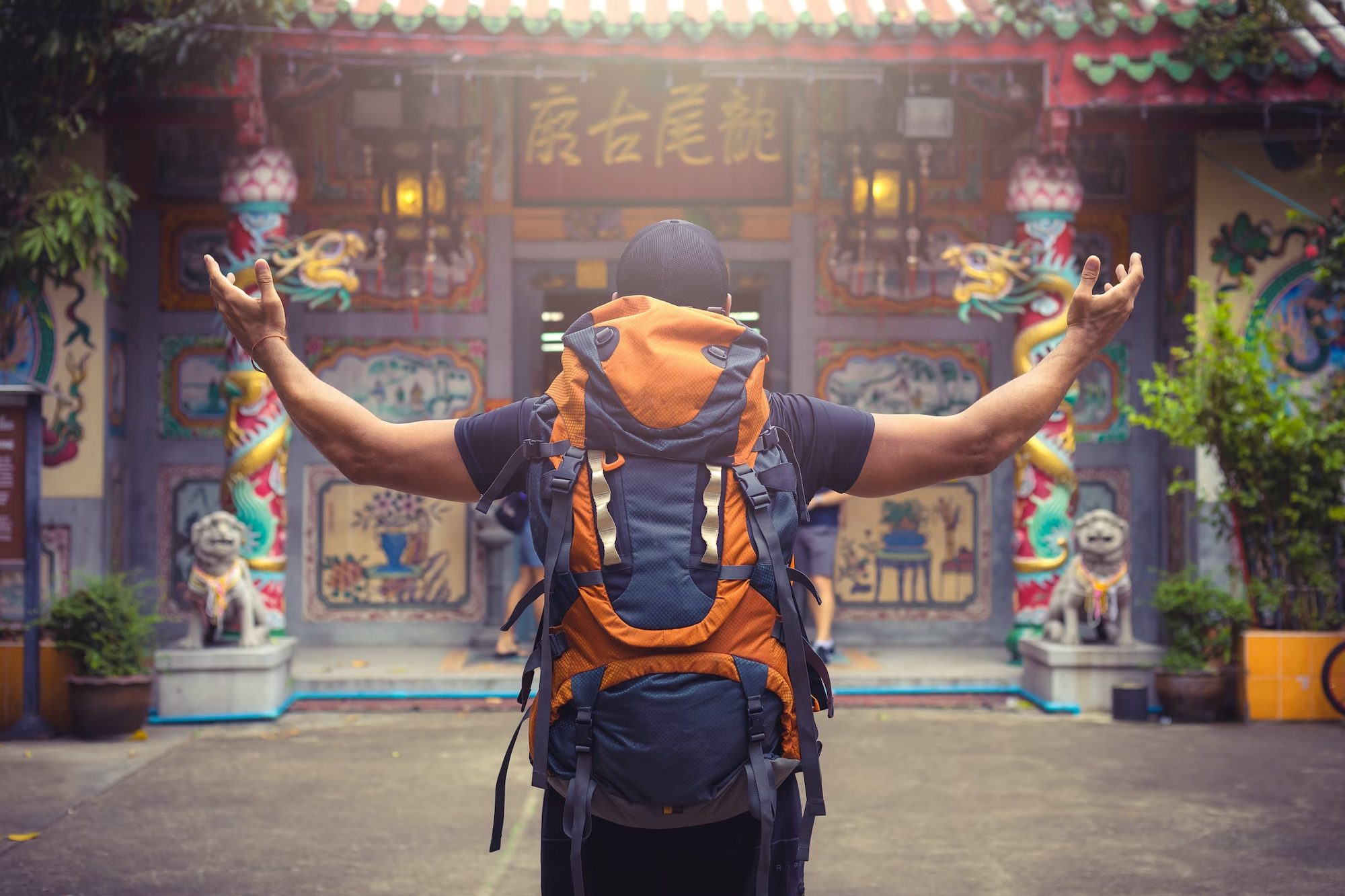
Conclusion
In conclusion, crafting a well-thought-out travel plan is an art that involves meticulous attention to detail and a strategic approach. From setting a realistic budget to navigating the financial landscape with savvy tips, understanding your travel needs, choosing the perfect destination, and planning activities, every step contributes to a seamless and stress-free journey. Prioritising safety, minimising risks, and incorporating money-saving strategies not only enhance the overall travel experience but also provide peace of mind. Remember, the key is to strike a balance between preparation and spontaneity, allowing for flexibility while ensuring that essential aspects are thoughtfully considered. As you embark on your next adventure, armed with this comprehensive guide, may your travels be filled with inspiration, discovery, and the joy of crafting your perfect holiday.
FAQs
Start by setting a realistic budget, defining your travel style, and choosing a destination based on your interests. Utilise online resources and advice from experienced travellers to streamline the planning process.
Use tools like Kiwi for flexible date searches, sign up for price alerts, and consider breaking up flights for potential savings.
For shorter trips, booking in advance is recommended to save time. For long-term travel, consider booking a few days at a time or winging it based on your preferences. We recommend you book via Hostelworld.
Structure your trip with a day-by-day itinerary, prioritising activities based on research and interests. Allow flexibility for spontaneous discoveries and unexpected opportunities.
It’s advisable to start planning a few months in advance for thorough research, optimal bookings, visa arrangements, and necessary preparations.
Plan a route connecting geographically close destinations, use efficient transportation, and explore regional passes or visas for border crossings. Optimise your itinerary for maximum country count.
Research activities, prioritise based on interests, and create a flexible day-by-day schedule. You should utilise online tools, travel apps, and resources for inspiration and guidance.
Break the process into tasks, use resources, and prioritise essentials like accommodations and transportation. Create a checklist, set realistic goals, and seek guidance from experienced travellers.
There are three main types of itineraries: time-based itineraries organise activities by date and time, event-based itineraries centre around specific attractions, and location-based itineraries group activities based on proximity to each other.
